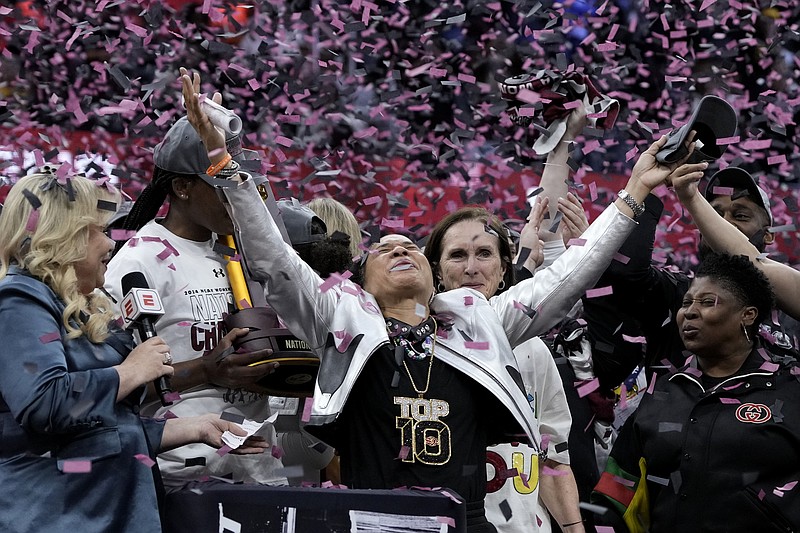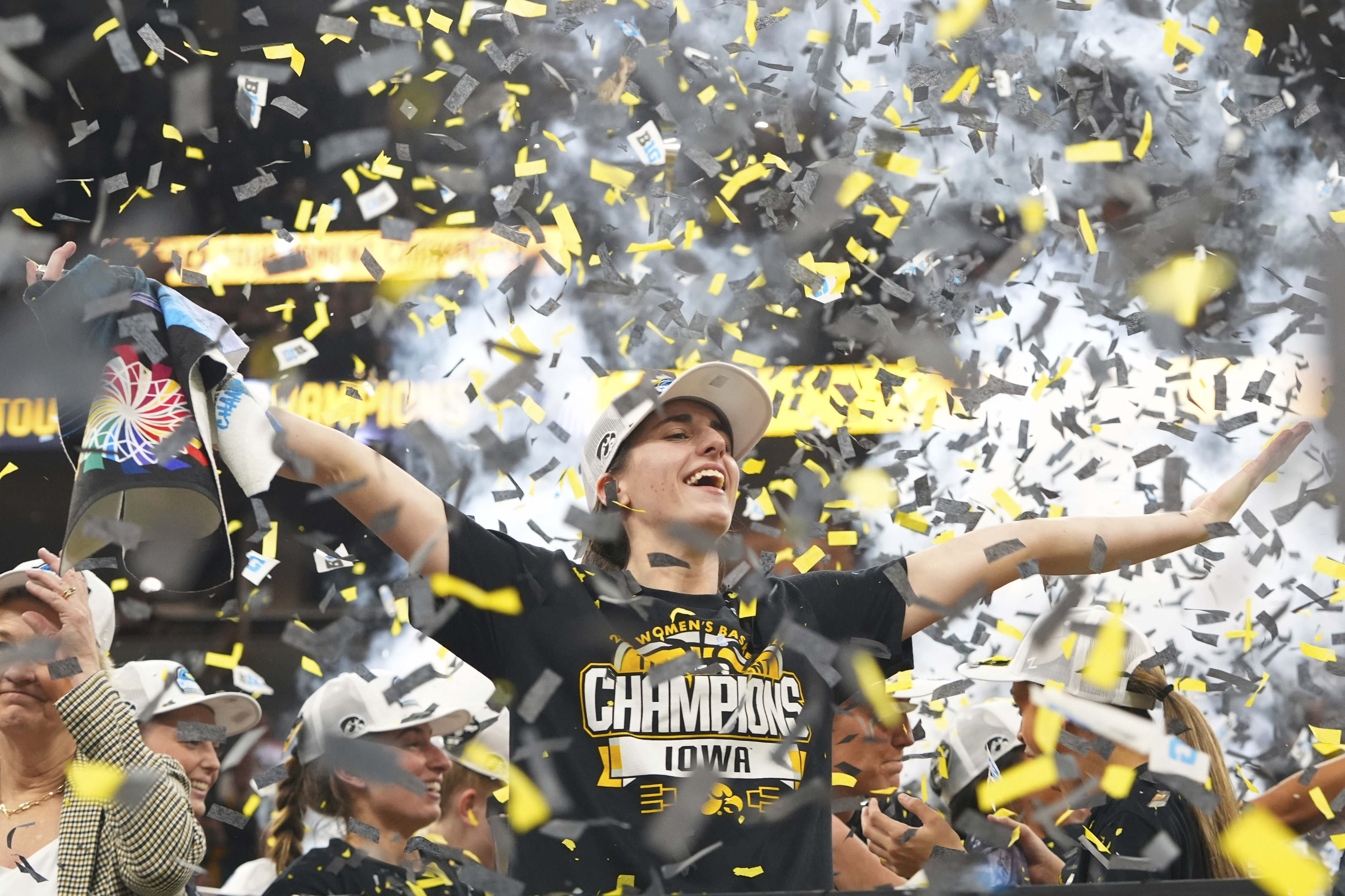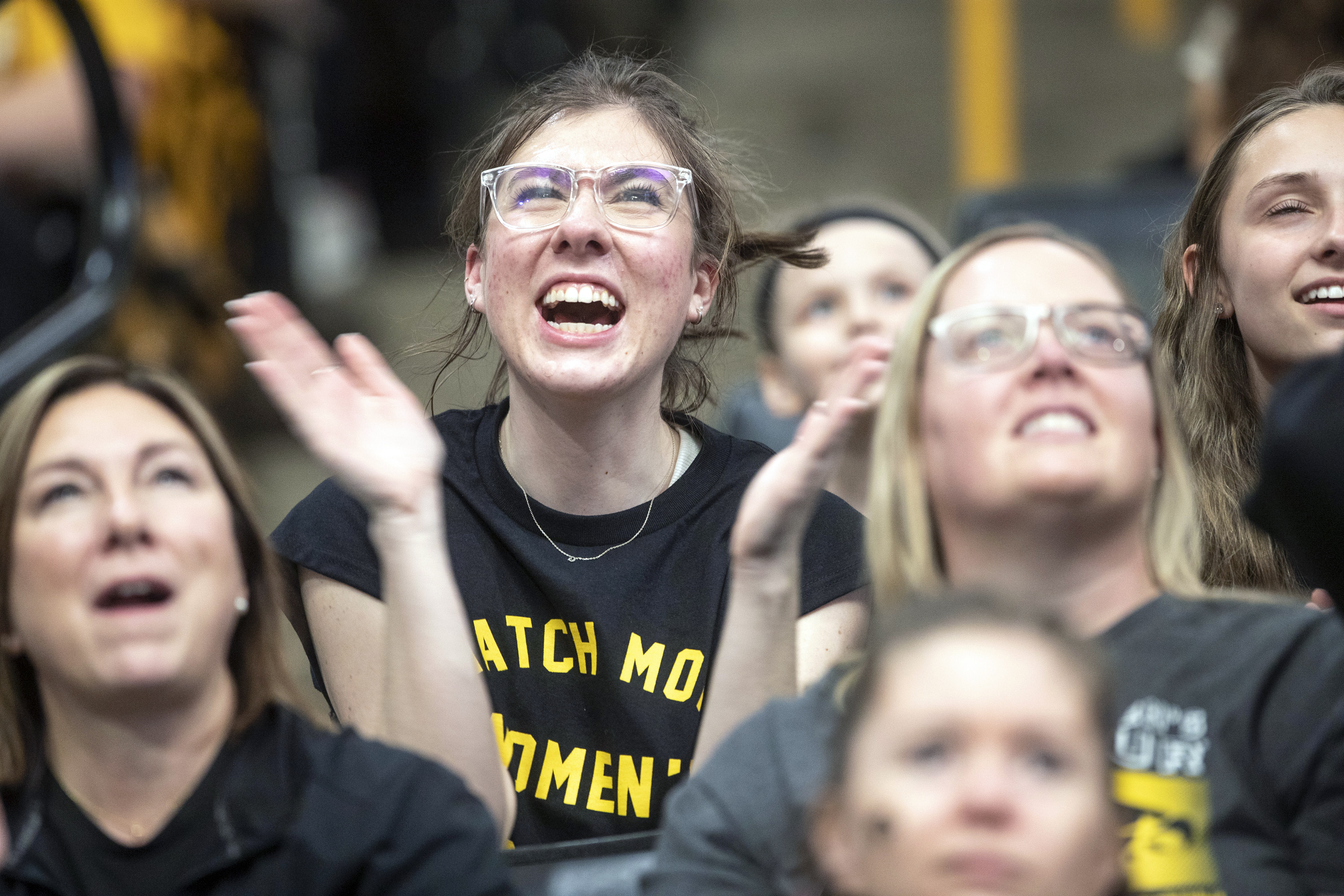CLEVELAND (AP) — It isn't just Caitlin Clark. And no one knows that better than the Iowa superstar.
While the two-time Associated Press Player of the Year understands her impact on the women's NCAA Tournament during the Hawkeyes' run to a second straight title game — with the sellouts she played in front of, the historic TV ratings and all those commercials, it was hard to miss — Clark never forgot that she was just part of the show.
It is why the NCAA's all-time leading scorer is so confident what happened to the sport she loves over the last month is sustainable. Clark doesn't view the culmination of her college career as the end of something. Hardly.
“When I think about women’s basketball going forward, obviously it’s just going to continue to grow, whether it’s at the WNBA level, whether it’s at the college level,” she said after the Hawkeyes fell to South Carolina in the championship game. “Everybody sees it. Everybody knows.”
If they didn't before, they do now.
Attendance in the tournament was up across the board, not just in the games involving Clark. Ratings, too, including a record audience of 18.7 million for the title game, the highest for a basketball broadcast of any kind in five years. Social media hummed about everything from Clark to USC freshman star JuJu Watkins to the officiating.
It culminated in a Final Four whose buzz at least rivaled that of the men's.
Rocket Mortgage FieldHouse buzzed all weekend. More than 10,000 fans showed up for Iowa's shootaround on Saturday and stars from former Hootie and the Blowfish frontman Darius Rucker to actor Jason Sudeikis to soccer star Megan Rapinoe were in the stands as the Gamecocks completed a perfect 38-0 season.
The vibe was palpable.
“I remember two years ago, there was no talking about the women’s game,” Gamecocks sophomore guard Raven Johnson said. “I went on social media and all you saw was boys basketball. Now you go on social media, you see all these top players. You see women’s basketball being the face of all these (magazine) covers ... and in commercials when you’re watching the game. So that’s a big thing for women’s basketball. I’m loving it and it’s going to get better from here.”
It wasn't perfect
Still, things — much like everyone's bracket picks by the time the Final Four rolls around — were hardly perfect. Notre Dame freshman star Hannah Hidalgo missed a portion of the Irish's loss to Oregon State in the Sweet 16 when she was ordered to take out her nose ring, even though Hidalgo had worn it all season without issue. The regional site in Portland was played with one 3-point line 9 inches short of the official distance at the top of the key.
That has never happened in the men's tournament, which critics called symbolic of the second-tier status they believe the women's tournament still receives.
“Those things shouldn’t happen and we've got to make sure they don’t happen going forward,” NCAA President Charlie Baker said shortly before the women's final, where the court was pristine. “They are in some respects a reminder to us that this tournament is special and because it’s special, we need to be special.”
Equitable money
The next step for the women's tournament will likely be introducing the same “units” model that has long been a part of men's March Madness. The concept provides a financial benefit to teams and conferences that reach the tournament, with the benefit increasing up to a point the deeper a school goes. The men have it, the women do not.
The NCAA's finance committee is exploring ways to put the model in place before next year's tournament so schools that reach the 68-team field can share in a portion of the revenue from the NCAA's TV deal with ESPN worth $115 million per year across 40 sports.
“I think it will be the start of what ought to be a terrific, numerative benefit for teams that make the tournament and do well,” Baker said.
Given the spike in the tournament's popularity, the TV partnership with ESPN could be viewed as undervalued. Baker isn't as concerned, believing the network — which had 43 cameras stuffed inside the arena this weekend and hours of pre- and postgame coverage on Sunday — will help the NCAA “max this thing out.”
Star power
The players are doing their part to help. Athletes being able to cash in on use of their name, image and likeness has made them more visible than those that came before. Clark, UConn's Paige Bueckers and LSU's Angel Reese and Flau'jae Johnson are hawking everything from sports drinks to shoes to insurance.
That kind of marketing isn't limited to the traditional window of a college basketball season, giving the women's game a full circle of life moment. The stars are driving the game. The game is driving the tournament. The tournament is helping turn players into stars. And so it goes.
Clark, Reese and South Carolina center Kamilla Cardoso, the Final Four's Most Outstanding Player, are among the group heading to the WNBA next season.
Bueckers — who is returning for one more season at UConn — figures to be the main attraction when the Huskies take the floor in the fall. Yet there will be others like Watkins, Hidalgo and Bueckers' incoming teammate Sarah Strong, too. With even more on the way.
Growing the game
What exactly is drawing people to women's basketball hardly matters to those fundamentally invested in its growth.
“I don’t care if it’s us," Gamecocks coach Dawn Staley said. “I don’t care if it’s Caitlin. I don’t care if it’s JuJu or Hannah. I just want our game to grow, no matter who it is.”
Clark sees what's happening at the NCAA level as part of a larger cultural shift that goes far beyond one player, one team, or one sport.
"When you’re given an opportunity, women’s sports just kind of thrives," she said. “I think that’s been the coolest thing for me on this journey. We started our season playing in front of 55,000 people in Kinnick Stadium. And now we’re ending it playing in (front of) probably 15 million people or more on TV. It just continues to get better and better and better. That’s never going to stop.”
Even if success is not linear. Nearly 30 years ago, Geno Auriemma led UConn to the first of its 11 national titles in a thrilling final against Tennessee and coach Pat Summitt, a game littered with future Hall of Famers (coaches included).
Over 7 million people tuned in to CBS to watch, a record at the time. The first USA women's basketball “Dream Team” followed the next summer at the Atlanta Olympics. The WNBA and the (now long defunct) ABL were born shortly thereafter.
And while the women's game and the tournament have carved out a niche over the last quarter-century, they have never felt this relevant, this vibrant, this loaded with possibility.
“It’s a moment, like people are saying, but it’s more than a moment, you know?” Auriemma said. “Sometimes moments become minutes, and minutes become hours, and hours become days. And the next thing you know it becomes part of the national pastime.”
___
AP Basketball Writer Doug Feinberg contributed to this report.


